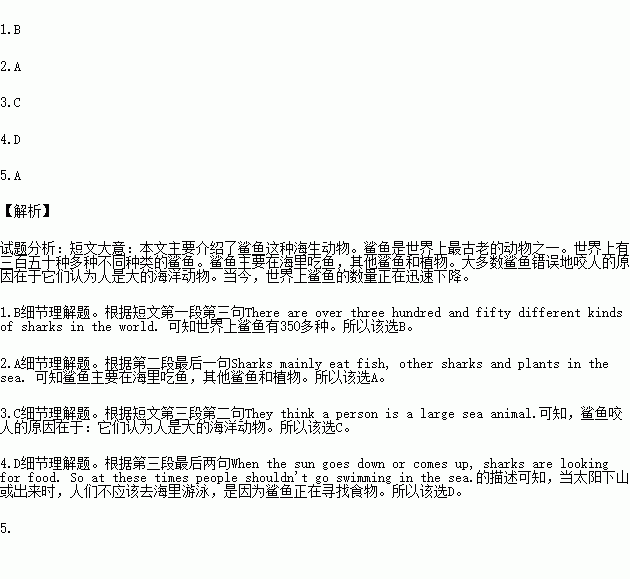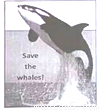题目内容

Let me tell you something about sharks. Sharks are among the oldest animals in the world. There are over three hundred and fifty different kinds of sharks in the world. Most sharks are about two meters long and live in the seas.
A shark can smell something in the water, for example, the blood of animals. That helps them find their food. Sharks mainly eat fish, other sharks and plants in the sea.
Most sharks bite people by mistake. They think a person is a large sea animal. When the sun goes down or comes up, sharks are looking for food. So at these times people shouldn't go swimming in the sea.
Today people kill sharks for food and their skin. The number of sharks in the world is dropping fast.
1.How many kinds of sharks are there in the world?
A. Less than 350. B. More than 350.
C. About 200. D. Over 400.
2. What do sharks mainly eat in the sea?
A. Fish, other sharks and plants.
B. Fish and plants.
C. Other sharks and plants.
D. Fish and other sharks.
3.Why do most sharks bite people by mistake?
A. Because they think a person is dangerous.
B. Because they think a person can hurt them.
C. Because they think a person is a large sea animal.
D. Because they think a person can take away their food.
4.Why shouldn't people go swimming in the sea when the sun goes down or comes up?
A. Sharks are everywhere at those times.
B. Water is cold then.
C. Sharks are looking for a person then.
D. Sharks are looking for food then.
5.How is the number of sharks in the world today?
A. It is dropping fast. B. It is rising fast.
C. It is not changing. D. We don't know.


